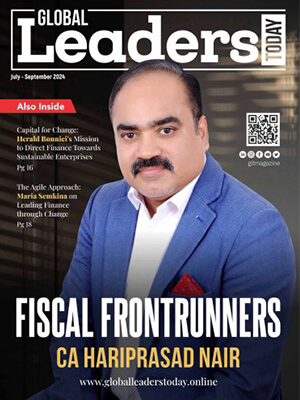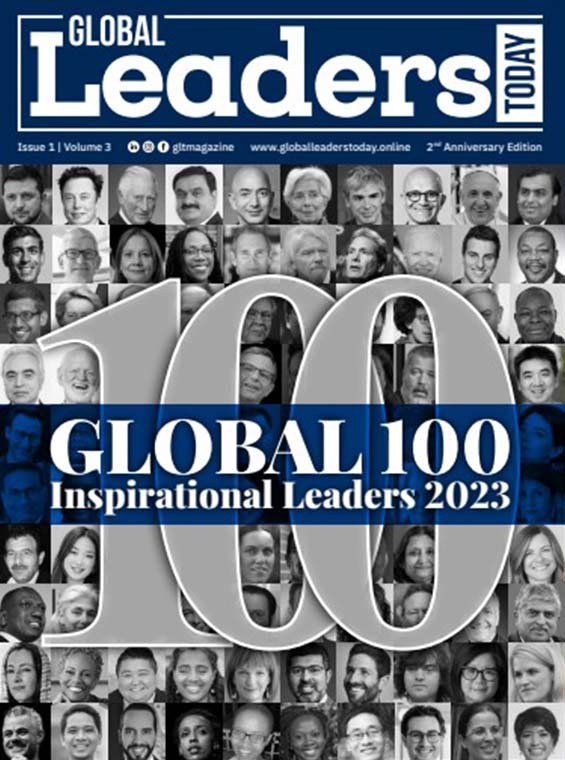Written by contributing writers Dr. Hemachandran Kannan, Director – AI Research Centre, Woxsen University, and Dr. Raul V. Rodriguez, Vice-President, Woxsen University
I. Introduction
CXOs must make increasingly difficult decisions that might make or destroy their organizations in the quickly changing commercial and technological world. A variety of possibilities and problems are presented by the ever-expanding digital world, which calls for creative ways of problem-solving and decision-making. Immersive technology is one such cutting-edge strategy that has been gaining popularity across sectors.
Virtual reality (VR), augmented reality (AR), and mixed reality (MR) are all types of immersive technologies that have moved beyond the boundaries of gaming and entertainment to revolutionize the business sector. This article examines how CXOs may use immersive technology to improve their decision-making procedures and produce more effective, well-informed, and data-driven results.
CXOs are in charge of guiding their organizations toward sustainable growth and profitability as leaders in their respective fields. In contrast, they frequently run into challenging situations that need foresight, in-depth data analysis, and cross-team cooperation. Sometimes, traditional methods of decision-making fall short of resolving these difficulties.
When immersive technology enters the picture, it offers CXOs a novel way to connect with data, visualize it, and work with stakeholders. CXOs may get insights that were previously unreachable by immersing themselves in cutting-edge experiences, ushering in a new age of decision-making prowess.
The core of immersive technology, its effect on CXOs, and actual instances of how business leaders have taken advantage of its potential to alter their organizations will all be covered in the sections that follow. We hope that these case studies and insights will demonstrate to CXOs the real advantages that immersive technology can offer, motivating them to use this game-changing tool in their quest for better, wiser, and more significant business choices. Let’s go out on this immersive exploration and innovation adventure where pixels and profit meet and where digital experiences reimagine the road to success for today’s CXOs.
II. Understanding Immersive Technology
Virtual reality (VR), augmented reality (AR), and mixed reality (MR) are examples of immersive technologies that produce improved or simulated experiences while masking the boundaries between the real and virtual worlds. Users can see digital overlays of the actual world (AR), watch completely immersive computer-generated settings (VR), or interact with virtual objects placed in the real world (MR). These tools provide CXOs with engaging, interactive, and multimodal experiences that let them visualize data, simulate situations, and work together in novel ways. This revolutionizes the decision-making process and equips CXOs with the knowledge and power to make better decisions for their companies.
III. Immersive Technology’s Impact on CXOs
Immersive technology has a significant influence on CXOs, revolutionizing their capacity for decision-making. CXOs may access insights and experiences that weren’t previously available by implementing Virtual Reality (VR), Augmented Reality (AR), and Mixed Reality (MR) apps. They can analyze complicated statistics with more clarity thanks to immersive data visualization, which helps them make better decisions. VR simulations give CXOs the chance to test and improve their plans in risk-free settings, improving results. As a result, communication and problem-solving are improved. AR gives people the ability to overlay digital information onto the actual world. Additionally, immersive technology lowers geographical boundaries by enabling remote team management. CXOs are able to confidently move their companies forward by making better decisions that are informed by data and innovation as a consequence.
IV. Real-Time Examples of Immersive Technology in Decision-Making
Case Study 1: Virtual Reality in Product Design and Prototyping
In this case, a major automaker adopted virtual reality to revolutionize the way it designs and prototypes products. CXOs, design teams, and engineers used VR headsets to immerse themselves in lifelike virtual settings to visualize and interact with 1:1 scale car models. They were able to find design problems, improve ergonomics, and simplify manufacturing thanks to this immersive experience. By incorporating real-time input from the virtual simulations, the business was able to shorten the time it took to develop new products, avoid making expensive mistakes, and eventually introduce more inventive and customer-focused automobiles.
Case Study 2: Augmented Reality in Retail and Customer Experience
Augmented reality was included in a multinational retail chain’s customer experience plan. Customers may view AR overlays on product displays via a specialized mobile app on their cell phones, delivering more details, tailored recommendations, and even virtual try-on experiences. CXOs used data insights from augmented reality to get immediate feedback on consumer preferences and purchasing patterns. With the use of this data-driven strategy, they were able to improve consumer satisfaction overall while also optimizing inventory management, marketing activities, and brand loyalty.
Case Study 3: Mixed Reality in Remote Collaboration and Team Management
In order to enable remote communication among its geographically distributed personnel, a global technology business used Mixed Reality systems. Team members may virtually collaborate in virtual meeting rooms, interact with 3D models, and annotate real-world items in real-time by donning MR headsets. CXOs made use of these intense team meetings to promote the exchange of creative ideas, quicken project turnaround times, and strengthen corporate culture. Regardless of geographical boundaries, the organization was able to increase production thanks to the smooth integration of MR into their regular routines.
These actual instances show how immersive technology has broken down preconceived barriers, empowering CXOs to make data-driven choices with more precision, foster creativity, and provide measurable business results. CXOs can put their companies at the vanguard of digital transformation and achieve a competitive edge in the fast-moving global market by incorporating immersive technology into their arsenal for decision-making.
V. Challenges and Considerations
Although immersive technology has many potential benefits, CXOs need to be aware of several difficulties and factors. First, there might be significant implementation costs, including those for hardware, software, and training. Second, it is crucial to protect data privacy and security since immersive experiences could entail sensitive data. Third, to prevent interruptions, incorporating immersive technology into current workflows may need careful planning and change management. Additionally, for seamless communication, issues with accessibility and compatibility across platforms and devices must be resolved. Finally, in order to choose the most appropriate immersive solutions, it is crucial to keep up with changing technological developments. CXOs can fully realize the potential of immersive technology while minimizing risks by proactively addressing these issues.
VI. Best Practices for CXOs Integrating Immersive Technology
CXOs should adhere to the following recommended practices to successfully integrate immersive technology into decision-making processes:
Start with Pilot Projects: Start with little immersive initiatives so you may gauge their impact and determine which use cases are most pertinent to your company.
Invest in Training: Make sure staff are properly trained so they can utilize immersive tools to the fullest.
Data Governance and Security: Establish strong data governance guidelines and security precautions to safeguard private data during immersive events.
Collaborative Culture: Create an environment that values experimentation and cooperation while encouraging departments to use immersive technologies.
User-Centric Design: Focus on user experience to provide intuitive, captivating, and immersive solutions that appeal to both consumers and workers.
Measure and Analyze: Utilise analytics to monitor how immersive technology affects choices made by users and the results of corporate operations.
Stay Updated: To adapt and develop proactively, keep up with evolving immersive technology and market trends.
CXOs may successfully incorporate immersive technology into their organizations by following these best practices, which will lead to improved business choices and sustained growth.
VII. Future Outlook and Conclusion
Immersive technology’s prospects for use in CXO decision-making are surprisingly bright. The possibility for more complex and immersive experiences will increase as technology develops. CXOs may anticipate improved data visualization, smoother AI and analytics integration, and more accessible and affordable hardware. For CXOs in a variety of businesses, immersive technology will probably become a necessary tool that will improve cooperation, creativity, and productivity.
In conclusion, CXOs may advance their decision-making processes to new heights by embracing immersive technologies. By utilizing the potential of Virtual Reality, Augmented Reality, and Mixed Reality, they will be able to get access to previously unattainable insights, improve business plans, and pave the way for innovation, eventually guiding their organizations down a more fruitful and secure route. The opportunities are endless for CXOs who are willing to take advantage of this game-changing technology as the trip into the immersive world is just getting started.
Authors:
Dr. Hemachandran Kannan, Director – AI Research Centre, Woxsen University, Hyderabad, India
Dr Hemachandran Kannan is the Director of the AI Research Centre and Area Chair of the Analytics Department at Woxsen University. He is an ambassador of the AI Accelerator Institute and an Advisory Board member in many international and national companies such as AptAI Labs, USA, Agzitence Pvt, Ltd, and many more. He served as an effective resource person at various national and international scientific conferences and also gave guest lectures on topics related to Artificial Intelligence. Currently serving as Expert at UNESCO and ATL Mentor of Change. He is an expert in Natural Language Processing, Computer Vision, Building Video recommendation systems, and Autonomous Robots. He is working on various real-time use cases and projects in collaboration with Industries across the globe.
Dr. Raul V. Rodriguez, Vice-President, Woxsen University, Hyderabad, India
Dr. Raul Villamarin Rodriguez is the Vice President of Woxsen University. Dr. Rodríguez is an Adjunct Professor at Universidad del Externado, Colombia, and member of the International Advisory Board at IBS Ranepa, Russian Federation, and a member of the IAB, University of Pécs Faculty of Business and Economics. He is also a member of the Advisory Board at PUCPR, Johannesburg Business School, SA, and Milpark Business School, South Africa, along with PetThinQ Inc., and SpaceBasic, Inc. He is a visiting professor at Uni. del Rosario, and Expert at UNESCO.








